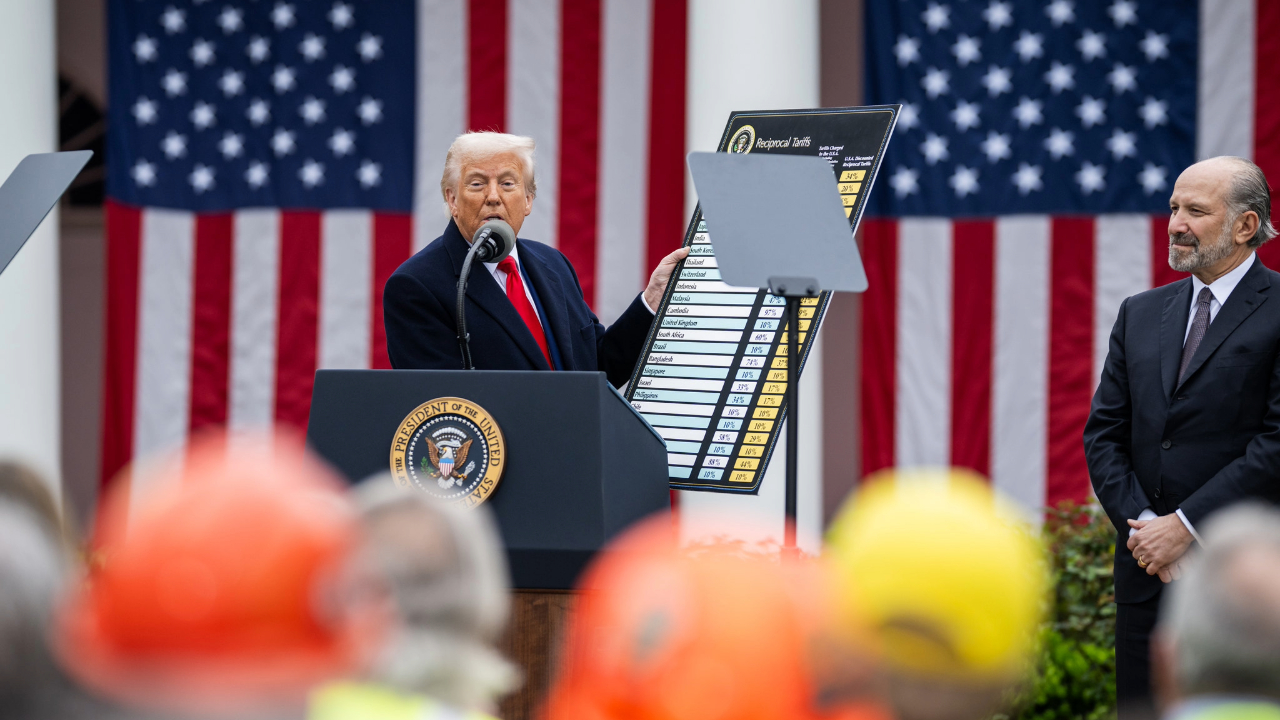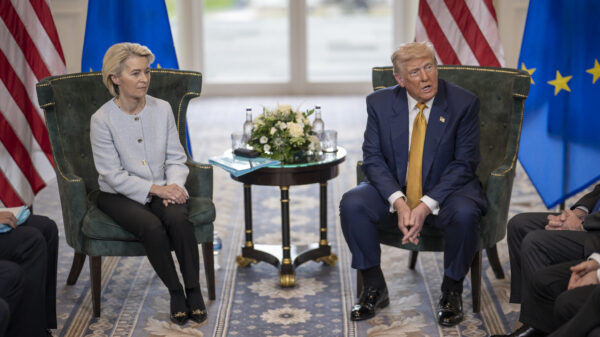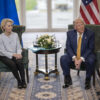Staff Writer Benjamin Aston examines the costs, human and fiscal, of the Trump Administration’s domestic and international policy.
The White House has faced uncertainty following President Donald Trump’s public feud with Elon Musk over Trump’s latest bill, intended to reignite the US economy. Trump’s “Big, Beautiful Bill” was passed in late May, by an incredibly tight House majority of 215-214. The legislation aimed to reduce taxes, increase debt taken on by the government and reduce social spending.
Only two Republicans voted against the Bill, Thomas Massie and Warren Davidson, and, as a sign of the President’s no-nonsense attitude to dissent, the White House Press Secretary warned that the President believes they should be challenged when they stand for re-election next campaign. The President claimed on Truth Social that this was “arguably the most significant piece of Legislation that will ever be signed in the History of this Country!” Perhaps, but only for the richest. The bill was funded by taking funds from other critical areas–with almost $800bn taken from Medicaid. Hakeem Jeffries, leader of the minority of the US House of Representatives, criticised the bill as “taking food out of the mouths of 13.7m children, disabled Americans, veterans and older Americans”.
Shares in solar companies also took a hit after the bill passed. With the President removing clean-energy tax credits, Sunrun’s share price dropped over 37%. This coincides with the bill’s 10-year restriction of AI regulation at state-level. It is expected that Trump has chosen to attack those he calls ‘hoaxsters’ warning of an ever-increasing threat facing our planet, but that the world’s largest economy disregards its responsibilities is concerning and short-sighted.
Before his spat with the President, Musk formerly operated and led the Department of Government Efficiency (DOGE). Government departments were gutted, worldwide aid cut and funding of vital scientific research eliminated. Unfettered access beyond the department was also granted to DOGE staff, many of whom had ties with Musk, including one employed at X and SpaceX, according to Wired, raising the question of the DOGE’s motivations and why a software engineer like Musk was seen as necessary to evaluate governmental efficiency. Even with the claim that DOGE’s actions saved $170bn, the question as to how that money will be put to better use remains, other than that billionaires must eat and (apparently) need tax cuts to do so. According to the Financial Times, of that $170bn, only $31.8bn of savings are well accounted for – with even this appearing overstated and underwhelming against Musk own target of $2tn in savings annually.
The President has since threatened to remove Musk’s government subsidies and contracts, which would have huge implications for Musk’s SpaceX and Starlink in particular. Trump claimed this would be “the easiest way to save money in our budget”. Yet, the President’s realisation only came immediately following the duo’s feud, rather than in the months preceding it, when Trump and Musk ruthlessly operated DOGE to cut government spending.
Whether Trump is serious about revoking Musk’s contracts is up for debate. However, Trump’s use of the presidency to manipulate and attack Musk and any other opponents is undoubtably a breach of the trust placed in him. If Musk hadn’t bankrolled $250m of Trump’s campaign, would he have had such impact at the start of Trump’s second term?
Trump’s latest attack follows US trade deals with the UK and China, where Musk had claimed the tariffs imposed by the US would cause a recession. The deal with China reduced the US tariffs on Chinese imports to 30%, with Chinese tariffs down to 10%. The UK-US deal also reduced tariffs on steel, aluminium and cars for US importers, with a new export market opening for US businesses to the UK for agricultural products. Importantly, the UK’s digital services tax—a source of unease for the US due to the implications on larger US tech companies—remains unchanged, stuck at 2%. Given the recent raise in US tariffs on steel and aluminium to 25%, the deal looks increasingly impressive for Prime Minister Keir Starmer.
It is interesting to see the President back down from his incredibly aggressive 245% tariff on China. Trump has negotiated in such a way to allow his supporters to celebrate a victory over China, with the US having 20% lower tariffs, supposedly due to China’s inaction over the fentanyl crisis. However, these tariffs are largely performative and give an opportunity for propaganda to be pushed. Consumers will still foot a huge portion of the 30% tariff themselves, with Walmart warning that consumers will pay higher prices due to the tariffs.
The White House’s push towards domestic manufacturing remains strong, undeterred by the recent trade deals. Apple faced criticism from the President following its decision to move the majority of iPhone manufacturing for US consumption from China to India: “we are not interested in you building in India”, announced the President. Yet, it is hardly a surprise to see companies reluctant to move their supply chain to the US: Dan Ives, an Analyst at Wedbush Securities, told CNN that it would cost an estimated $30bn and three years to move just 10% of Apple’s supply chain to the US. This complacency has led to uncertainty within the markets, with Elliott Management warning that Trump’s policies could lead to “enormous damage”. Elliott also claimed that the appeal of the dollar and doing business within the US may well be decreasing.
Elliott is not the only firm to warn of the economic damage that Trump’s policies may inflict. Larry Fink, CEO of the world’s largest asset manager Blackrock, claimed “if we’re going to stumble along at a 2% economy, the deficits are going to overwhelm this country”. Following the ‘Big, Beautiful Bill’, over $2.3tn of debt has been added. With increasing interest rates, there is fear that this will impede future investment.
The Trump Administration is yet to announce the outcome of the ‘review’ of the baseline tariffs on the majority of the other countries, but anything other than an increase would be a shock. Resultantly, foreign nations are questioning their ties, market and otherwise, with the US. With a volatile foreign policy, it is unsurprising to see China looking for other markets and trying to improve domestic consumption. The increase in risk with Immigrations and Customs Enforcement (ICE), rigorous security and a crackdown on free speech, has led to the EU has begun issuing burner phones to staff travelling to the US over spying fears. This all results in an uninviting environment for trade or alliance.
A move away from military reliance on the US is also predictable. With Macron announcing that France is considering basing nuclear weapons in allies’ territory, and the EU easing regulations on borrowing for military purposes, a world in which the EU and UK operate separately from the US is becoming a reality. Whilst the US has attempted to mediate in the Russia-Ukraine war, it has hardly been fruitful – with the exception of the US’ lucrative mineral deal signed in early May, which has had little-to-no impact on Ukraine’s war effort. Hardly in keeping with the promise of ending the war within “24 hours”.
Domestically, unrest remains prominent. Consistent arrests by masked agents on immigrants without adequate evidence leaves many in fear. Neiyerver Adrían Leon Rengel was deported to El Salvador by ICE, without his family even being informed. His brother, Nedizon Alejandro Leon Rengel, only realised he had been deported, over a month later, when it was revealed by NBC News. Rengel was deported due to his tattoos, which were alleged to be gang affiliated. He had no criminal record and no known gang-affiliation. The human cost is palpable: Rengel’s daughter consistently asks her uncle, Alejandro, when her father will call her.
Another man in a similar scenario, Kilmar Ábrego García, whom the government had claimed was also unable to be returned from El Salvador, has since been returned to the US on “preposterous” criminal charges. It is surprising that the White House has evaded any judicial action, given the blatant disregard for the Supreme Court’s order to “facilitate” the return of over 250 detainees, including García, despite clearly being able to return the detainees if it was necessary. One of García’s attorneys, Simon Sandoval Moshenberg, claimed it to be “an abuse of power, not justice”.
These are not isolated incidents. Mohsen Mahdawi, a permanent resident of ten years, was arrested and jailed for leading a protest against the Israel-Gaza war. US District Judge Geoffrey Crawford noted: “Even if he were a firebrand, his conduct is protected by the First Amendment”. Crawford noted that offending political opponents doesn’t justify detention, nor does alarming the state.
Tensions reached a tipping point on 7 June when 2,000 members of the National Guard were deployed in LA to deal with anti-deportation protests, against the wishes of California Governor Gavin Newsom, the first time that the National Guard has been deployed against the wishes of a Governor since 1965. Newsom claimed the move to be a “breach of state sovereignty”, with Trump’s acts being that “of a dictator, not a president”. Tear gas and rubber bullets were used to disperse protestors, including peaceful. 9News’ Lauren Tomasi, a reporter on scene in LA, with her back to police speaking to the camera, was shot with a rubber bullet unprovoked. The President even endorsed the idea of arresting Newsom for obstruction. Trump appears to be testing the limits of his power to quell discontent and maintain a level of control despite his increasingly authoritarian policies. The President’s approach to lawlessness certainly seems to have changed, following his pardons of over 1,500 6 January rioters following his election loss.
True to form, the Trump Administration has also targeted other marginalised groups in these first months: blaming DEI for the Washington plane crash, placing bans on transgender people serving in the military and attempting to end birthright citizenship. The White House has also launched attacks on educational institutions, with additional screening ongoing for those wishing to enter the country on student visas. This includes social media screening, with numerous students being denied visas due to criticism over Israel’s actions in the Israel-Gaza war and alleged support of Hamas. It is worrying that criticism of Israel’s conduct in the Israel-Gaza war has started to lead to arrest and deportations. Condemning Israel’s flagrant international law violations, including the killing of civilians waiting for aid and a UN worker, does not automatically equate to support for Hamas.
These, and other examples, make it difficult to clearly see a goal for the President, other than a move towards marginalisation. Trump’s presidency appears to rely on maintaining a level of compliance through fear. Nobody should be reluctant to protest peacefully, nor should anyone be fearful of retribution for speaking out. The joke is on him, however, as his actions also marginalise the country. Despite Harvard winning temporary reprieve from the ban on international students due to the “government vendetta”, it is likely that international students will begin to look elsewhere, given Trump’s policy is unpredictable, making it a gamble to commit to studying in the US. As a result, the EU and UK are expecting a boost in students and academics over the coming years. This would be a huge blow to the US and could potentially dethrone their dominance in the tech sector, yet they have nobody but themselves to blame.
It is difficult to understand who Trump’s policy actually benefits. Within Trump’s current term, it would not be surprising to see the US slip from the world’s largest economy. The US risks becoming a pariah state as the US’ neighbours and trade partners grow increasingly discontent with the President’s volatility and inconsistency. Indeed, the markets now largely fail to react when new policies or tariffs are announced. Inflation is rife and sentiment is hostile to ICE’s aggressive moves towards high levels of deportation. So, who is really happy under Trump’s rule?
For more in-depth analysis related to Trump, click here.

















